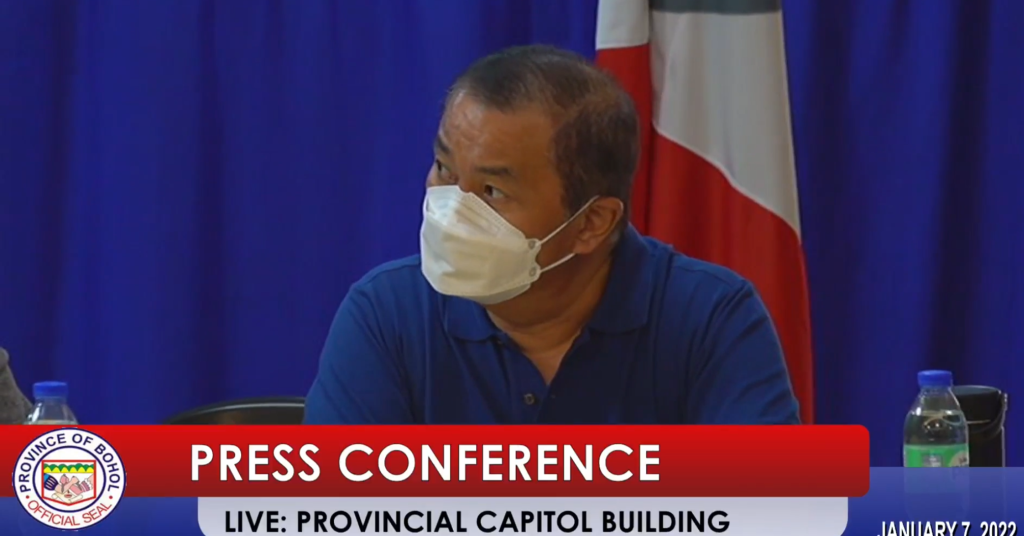
Bohol residents are to expect higher electricity rates in the forthcoming months with all three of the province’s distribution utilities (DU) drawing power from diesel-fueled facilities, as supply from geothermal power plants in Leyte was cut off after transmission facilities between the two provinces were damaged by Typhoon “Odette.”
Bohol Light Company, Inc. (BLCI) spokesperson Sherly Paga, in a press conference at the Capitol on Friday last week, attributed the foreseen higher rates to the sourcing of power from two diesel-powered facilities, the Bohol Diesel Power Plant (BDPP) in Tagbilaran City and the Power Barge (PB) 104 in Ubay, instead of the geothermal plants in Leyte.
“As of karon, dili pa mi kahatag sa specific rate. As of November, 2021 for residential ang rate nato naa sa P9.95 (per kWh) pero expected nato na [mosaka] kay ang atong nagdagan karon is diesel man siya so expected higher ang rate kung e-compare sa atong normal source,” Paga said.
Use of diesel fuel is among the most expensive means of power generation.
According to Bohol Electric Cooperative (BOHECO) I spokesperson Alger Siga, they estimated an upward adjustment of “P3 to P4” per kWh in their electricity rates due to the sourcing of power from the diesel-fired facilities.
“Duna g’yuy expected na pagsaka sa rates nato since medyo mahal-mahal ang cost sa fuel sa diesel na maoy planta na nagdagan karon,” said Siga in the same press conference.
Siga added that they will announce the actual rates in the forthcoming days pending the finalization of the added generation costs that will be paid by the DUs.
All three DUs in the province, BLCI, BOHECO I and BOHECO II, have entered into an emergency supply agreement with the SPC Power Corporation, owner of the BBDP and PB 104, after Typhoon Odette ravaged transmission facilities that channeled supply from geothermal power plants in Leyte to Bohol.
“Sa actual figure we will provide once ma finalize namo ang emergency supply agreement na among gisulod with the power supplier,” said Siga.
For his part, Vice Governor Rene Relampagos urged the DUs to directly explain to their customers through their monthly bills that their increased payments will not just go to the utilities but will also be used to pay for transmission and generation costs.
“May we request BLCI and BOHECO to clarify na as far as the charges na ilang e-impose sa konsumedor–na og maghisgot sila as of November na 9.95 per kWh na–na dili na tanan mo dung sa DU. Klarohan na ninyo unsay breakdown, part of that is payment sa transmission cost, generation cost kay basin magtuo ni sila tanan na madung na tanan kwartaha ninyo,” Relampagos said.
Bohol is expected to again be able to draw power from the geothermal power plants in Leyte in April upon the projected completion of two replacement towers of the National Grid Corporation of the Philippines (NGCP).
NGCP Visayas spokesperson Betty Martinez earlier said that the two “special towers” in President Carlos P. Garcia and Ubay which were toppled by Odette needed replacement.
The gigantic towers transmitted power from the Leyte-Bohol 138-kV submarine cable to the province’s DUs.
Bohol which still does not have sufficient in-island power supply has been largely dependent on energy sources in Leyte to meet its daily power requirement of 90 megawatts (MW).
Pending the replacement of the gigantic towers, Bohol will have to rely on the PB 104 and BBDP, unless another power barge is deployed to the province, which authorities have noted to be unlikely.
The barge and the BBDP can generate 32 MW and 16 MW, respectively, which can meet only half of the province’s estimated daily power requirement of around 90 MW. (RT)
